Moza unveiled its latest flagship wheelbases in August this year, with the R21 Ultra DD and the R25 Ultra True Torque DD providing 21 Nm and 25 Nm of torque, respectively.
Moza has supplied us with an R21 Ultra DD for review, which in some ways squares the circle for the Chinese manufacturer, given that its very first wheelbase, released in 2021 alongside the R16, was the original R21.
In the four years since, Moza has produced an impressive array of sim racing peripherals, including steering wheels, wheelbases, pedals, shifters, and handbrakes, with each iteration offering a slight improvement over the last.
For the R21 Ultra, this means the addition of an ‘all-new’ flat-wire motor, which Moza claims results in a zero-cogging feel. Essentially, cogging is the feeling of magnetic attraction between the rotating part of a direct drive motor and the iron within its stationary ‘stator’. Eliminating cogging provides a smoother force feedback experience, a feature most direct drive wheelbase manufacturers are striving for today.
So, let’s see how it performs.
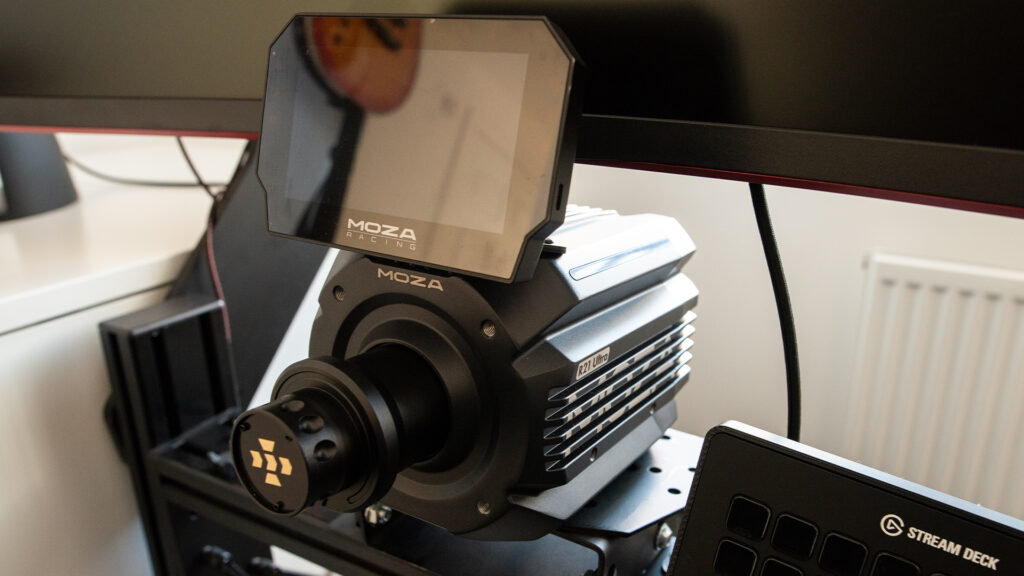
Materials and looks
The R21 Ultra’s chassis is entirely constructed from aluminium alloy, giving it a premium feel, with a more rounded design compared to Moza’s most recent wheelbases.
It retains the passive cooling fins of previous models, too, meaning there are fewer moving parts inside (and fewer things to go wrong in future).
What’s new is the addition of two RGB light strips atop the ‘base. Via telemetry, these can be tuned to display different colours (16.7 million of them, apparently) to represent traction control and ABS kicking in, as well as various flag signals.
Although the majority of the R21 Ultra is alloy, the rear section, where all its various ports are located, is encased in plastic, with input space for an emergency stop, pedals, shifter and dash (I had my CM2 HD Racing Dash connected for the duration of the review, which handily screwed to the top of the R21 Ultra).
Moza also claims its 21-bit magnetic encoder provides two million points of precision, which should translate into super-accurate steering inputs.
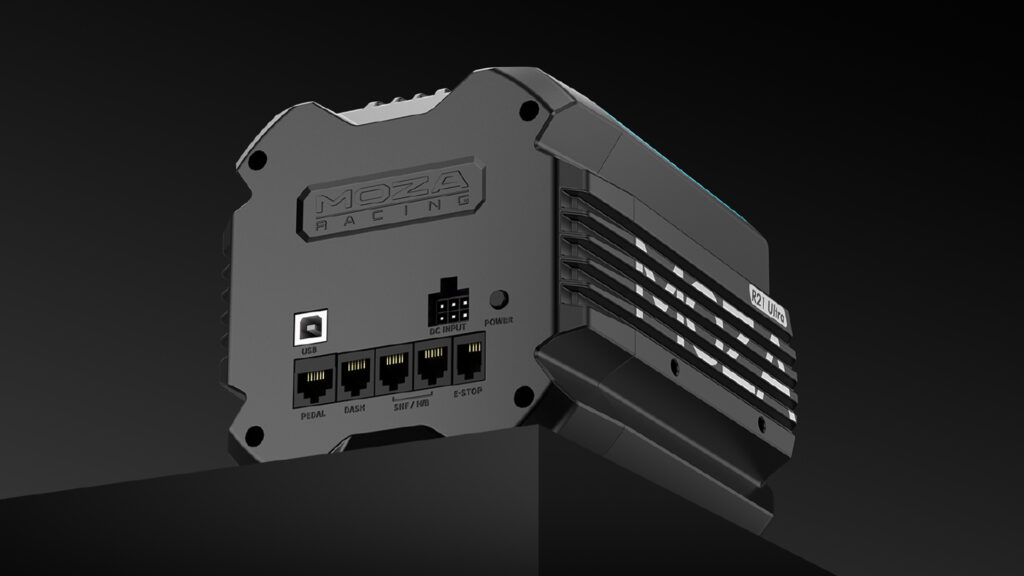
Mounting
The R21 Ultra was simple to mount on my GT Omega Prime Lite cockpit, fitting securely to its wheel deck via bolts supplied by Moza. Holes on the sides and the front of the unit provide extra mounting points, although these require further Moza front or side mount purchases.
Once fitted, the R21 Ultra doesn’t seem much bigger than the R12 I tested previously, and is certainly much less bulky than the original R21, fitting underneath my monitor with plenty of space to spare.
However, when trying to fit any of the three Moza steering wheels I currently own, I noticed an issue: the wheelbases’s quick-release section had been fitted the wrong way around. Moza’s steering wheel hubs feature six ball bearings to the top and four to the bottom, which line up with corresponding gaps on the wheelbase side, with the centre of the ‘top’ denoted by a triangle.
However, on my R21 Ultra, the triangle was above the four ball bearing indentations. Although I quickly noticed the problem, for any Moza newbies it could lead to connector damage.
Overall, though, the R21 Ultra looks and feels like a serious piece of kit, but that counts for nothing if it doesn’t perform on the virtual track.
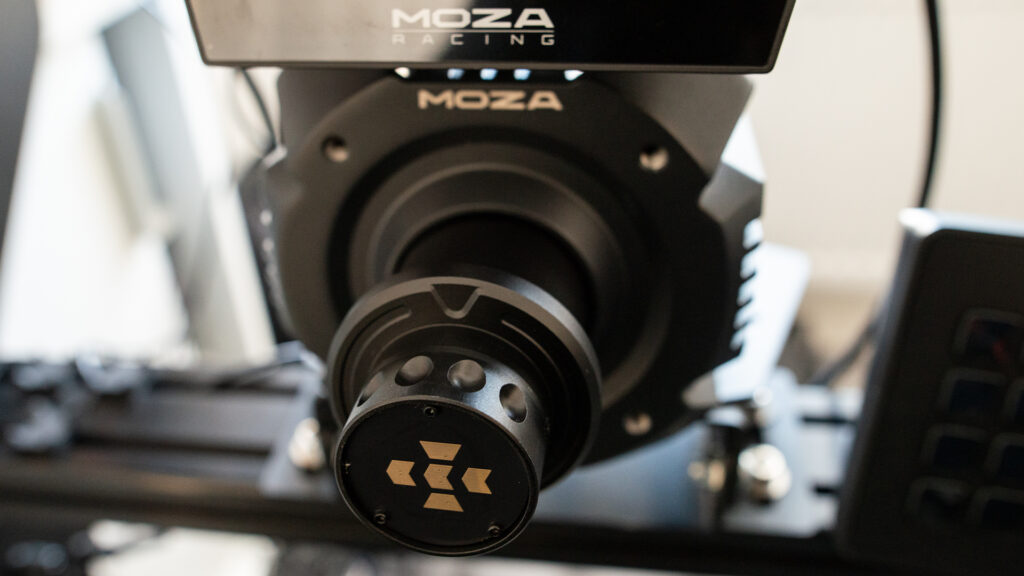
Hands-on
I set about sampling the R21 Ultra in several sims, downloading a beta version of Moza’s Pit House software beforehand.
To the uninitiated, Pit House is Moza’s proprietary software, allowing players to tweak and set up all aspects of any of its connected products, from force feedback to the colour of RGB lighting around your steering wheel’s buttons. I’ve used Pit House consistently over the last two years, and it remains a relatively slick application.
Firmware updates were a breeze to perform and I never experienced a single crash in my time with the R21 Ultra, which has not always been the case in the past with Pit House.
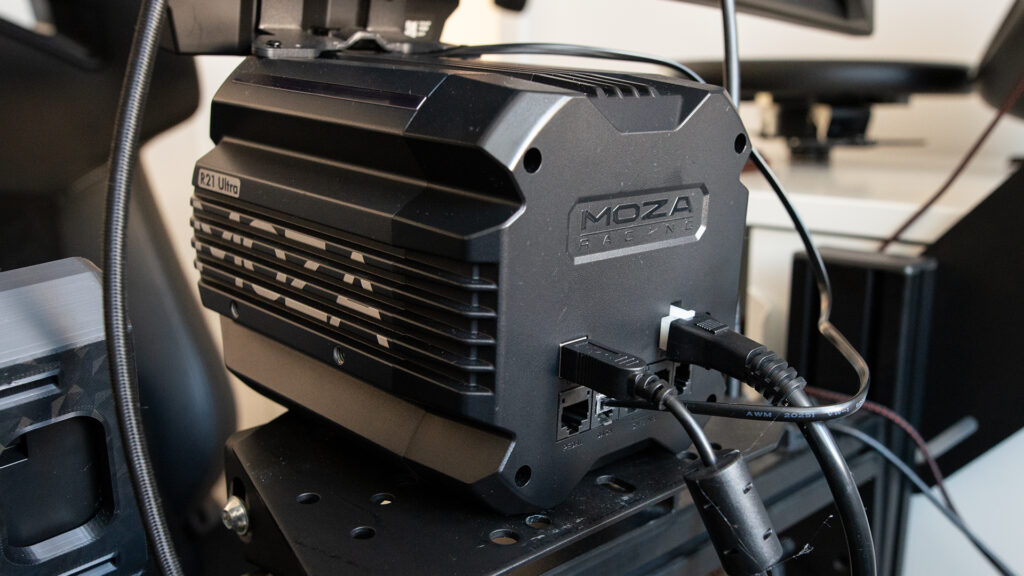
Wheelbase and force feedback options are clearly laid out, but can be quite confusing to fathom for newbies. Handily, Pit House offers tooltips for each setting, helpfully explaining its permutations, but finding a combination of parameters to suit yourself is naturally a time-consuming and meticulous process.
One thing to mention is that the R21 Ultra oscillated excessively without extra natural damping, while trying to use all of its 21 Nm torque with 100% in-game FFB was simply overkill. The vast majority of sim racers would agree with this, unless they were specifically training for real racing (tendonitis in my shoulder and elbow meant I couldn’t use all 21 Nm for too long!).
At this point, I have to mention that the 21 Nm is not a peak figure – the R21 Ultra can sustain 21 Nm consistently for a prolonged period. Generally, you’d want to lower most FFB effects to avoid clipping (the point at which your wheelbase reaches its limit of torque and can’t provide any more FFB detail), but allowing enough headroom for those rare occasions when high torque makes sense.
Clipping was never an issue for me, however, as I tend to prefer running with lighter FFB effects, and neither was overheating, despite the R21 Ultra’s fanless, passive cooling setup.
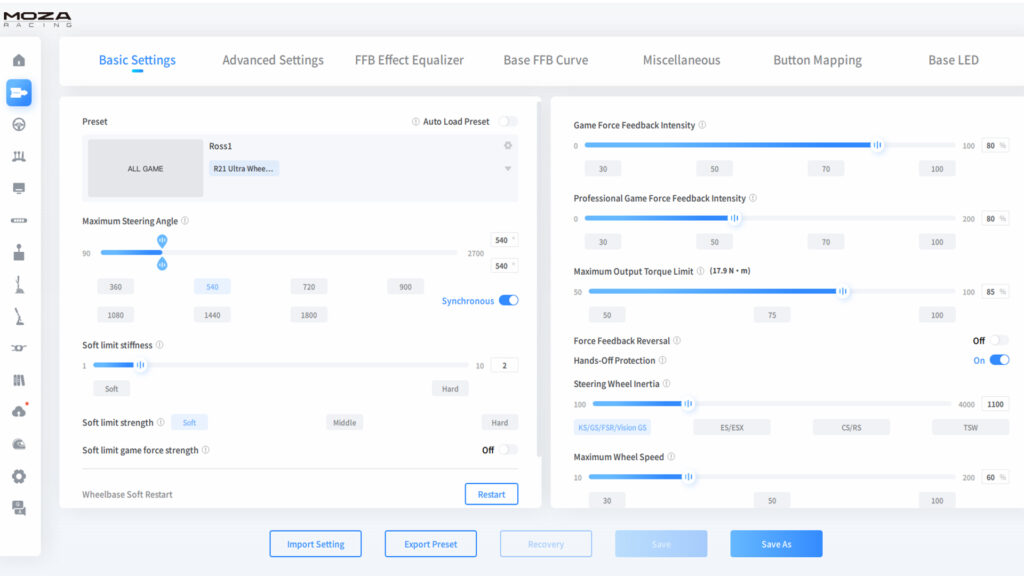
On-track
Starting with Assetto Corsa and Race Sim Studio’s GT-M Hyperion V8 mod (essentially a Ford Mustang GT3), I took to the hallowed asphalt of Daytona International Speedway’s Road Course, where I encountered an odd issue.
Although the feedback from the steering wheel was solid through the first sector (I had the GS V2P GT steering wheel hooked up), I experienced wild oscillations on the banked oval sections.
Seemingly, the R21 Ultra didn’t quite know how to interpret the disparate data being thrown at it, but increasing the damper effect and toning down the FFB strength helped.
I jumped onto rFactor 2’s version of the Floridian venue and tried the same with a GT3 car, and although I felt a similar sensation, it wasn’t as distracting. Not every sim handles FFB the same way, so it’s advisable to set up multiple profiles in Pit House to compensate.
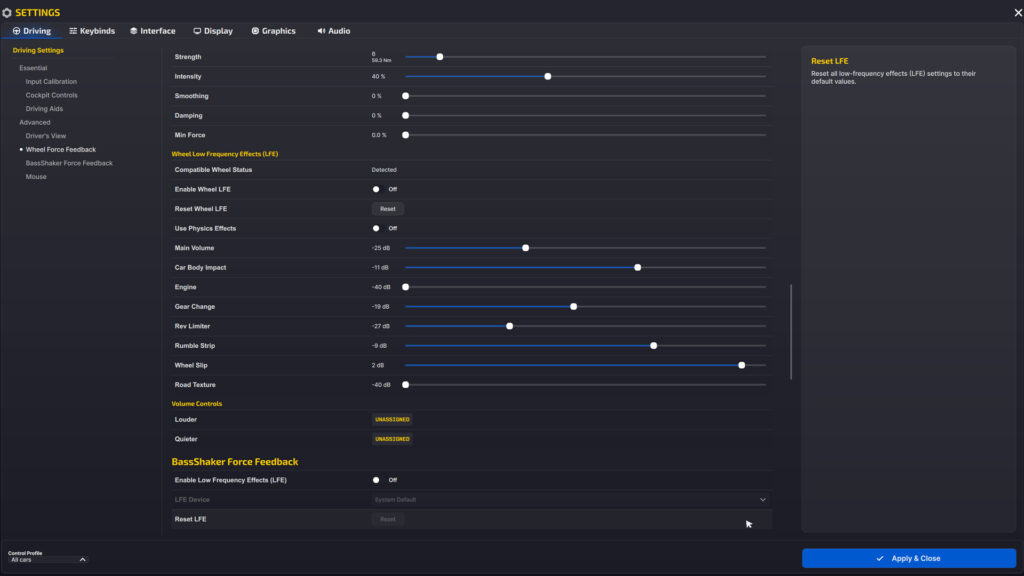
Helpfully, Moza offers FFB profile presets for most major sims, which can be installed in one click. For the most part, they provide a useful baseline, but it’s still worth spending some time to tune each to your preference.
Moza supports iRacing’s 360 Hz FFB, and straight out of the box it works incredibly well, with no perceptible input lag. I found the FFB to be quite spiky, initially, however, so I tried to smooth off the rough edges by tuning within iRacing’s own menus. This helped, but on exiting my first extended test session, the steering wheel randomly turned sharply into my kneecap as I climbed out of the rig. Ouch.
The R21 Ultra’s proprietary hands-off (knees-off?) protection failed to kick in here, so there’s clearly work to be done on Pit House’s beta build ahead of release.
For the most part, though, the R21 Ultra provided clear and positive feedback across multiple sims, with more than enough torque to offer uncompromising steering feel.
Effect Equalizer
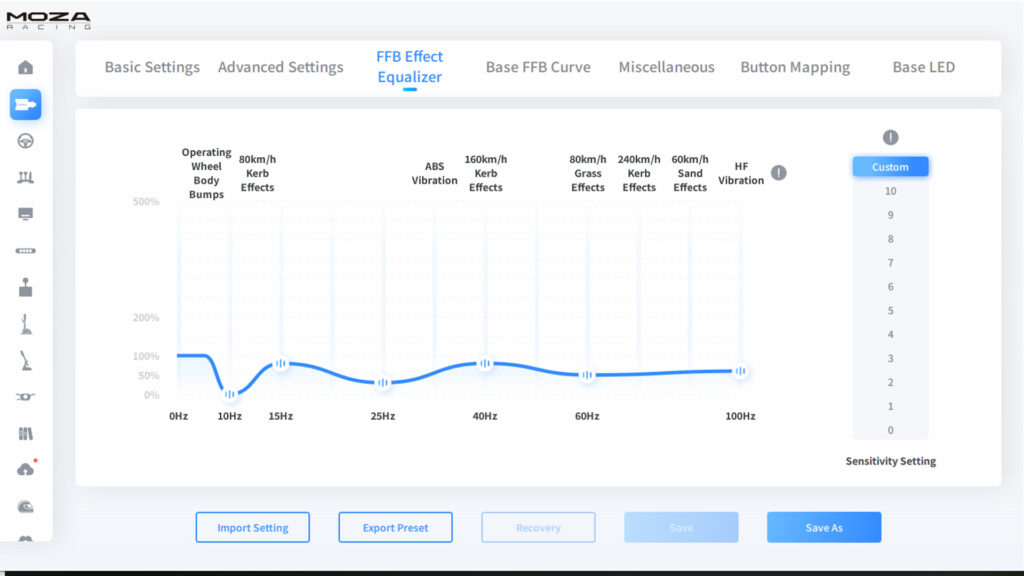
Pit House also allows you to tune more effects via its FFB Effect Equalizer (think along the lines of an audio graphic equaliser, which adjusts the tonal balance of frequencies to tailor sound to user preference).
Using this, I was able to tune out most of the road ‘noise’ that’s ever present when driving across all sims, which is one of my pet peeves. To remove the background buzz further, you can add more natural damping to the overall mix.
Value for money
This is where the R21 Ultra excels, as it’s available from $699 – an astonishing price for such a powerful and feature-rich wheelbase.
To put that into context, Simagic’s 18 Nm Alpha Evo Pro is the same price (minus shipping and taxes, of course), which feels like a deliberate ploy by Moza to usurp its rival’s flagship wheelbase.
To add further perspective, Fanatec’s 20 Nm Podium Wheel Base DD1 QR1, which was released in 2018, is currently $799.95, with the QR2 version $200 more. Asetek’s 18 Nm Forte Direct Drive Wheelbase is 906,72 €, too, making the R12 Ultra an extremely attractive prospect for sim racers looking to take a step upwards.
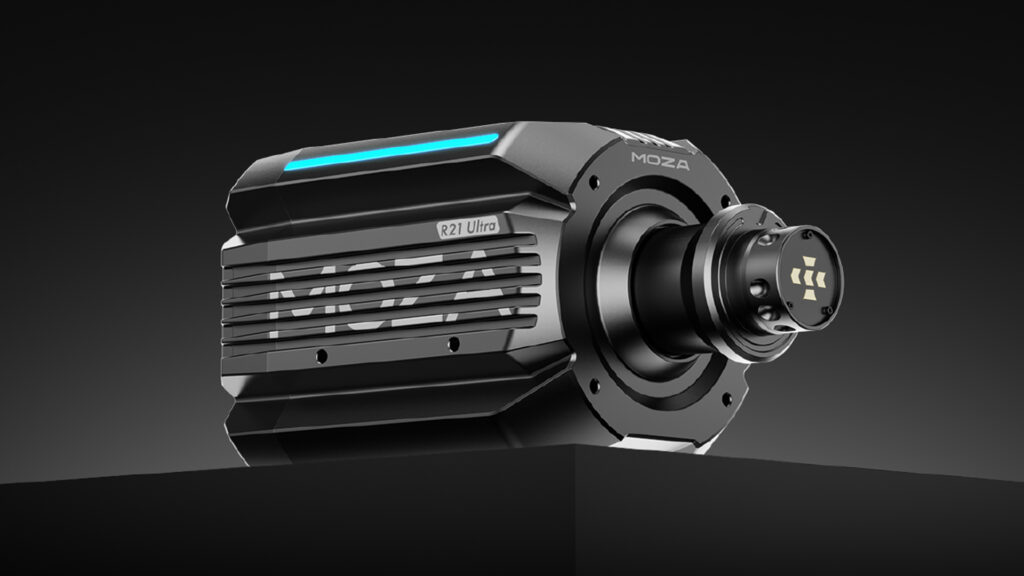
Verdict
Having run with a Simagic Alpha Evo Pro for several months ahead of testing the R21 Ultra, I’m in a good position to judge the feeling of both, especially as they’re in direct competition.
For me, the Simagic offers smoother feedback overall, with the Moza’s more granular and a bit rougher around the edges. The extra 3 Nm of torque the Moza ‘base offers is imperceptible to most sim racers, and doesn’t necessarily provide a clear advantage in practice.
Although I believe one of the reasons for the Simagic base’s smoothness is some extra baked-in damping, it’s the wheelbase I’d choose between the two, although both are closely matched in terms of features, ease-of-use and software.
However, if you’ve already invested in Moza’s ecosystem, the R21 Ultra still represents an affordable and powerful step up in performance, and not one you’ll likely regret.
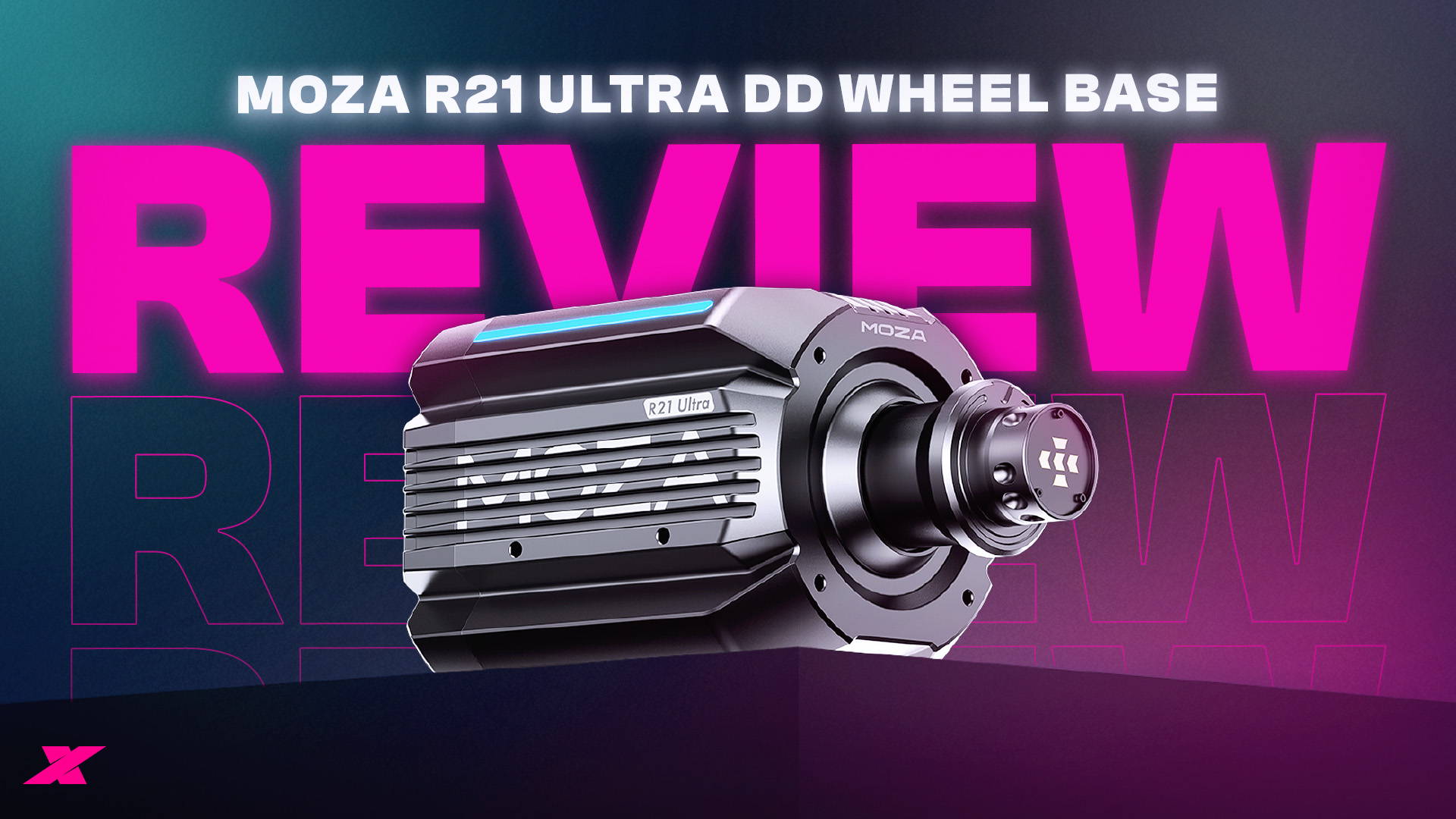
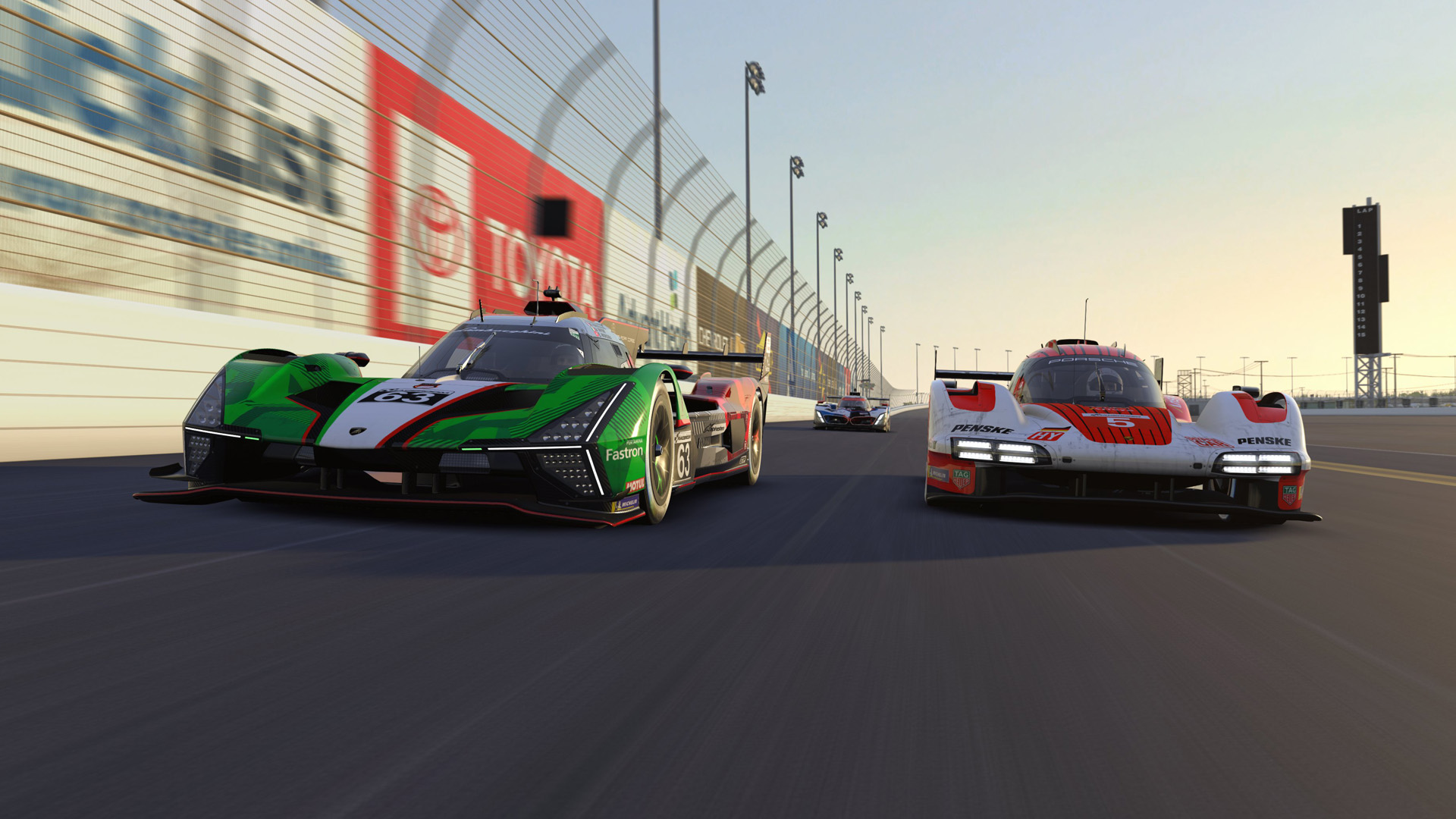
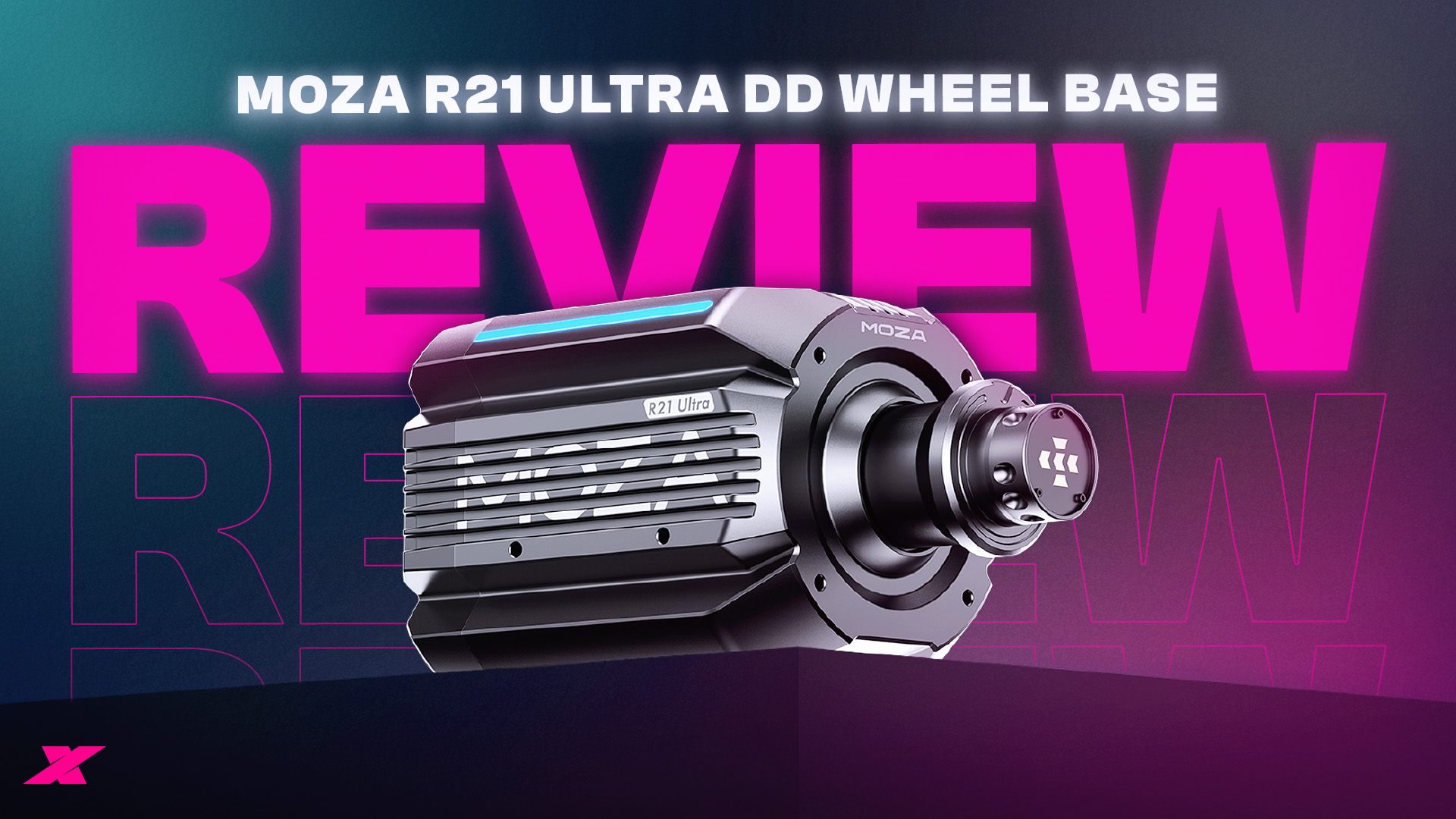
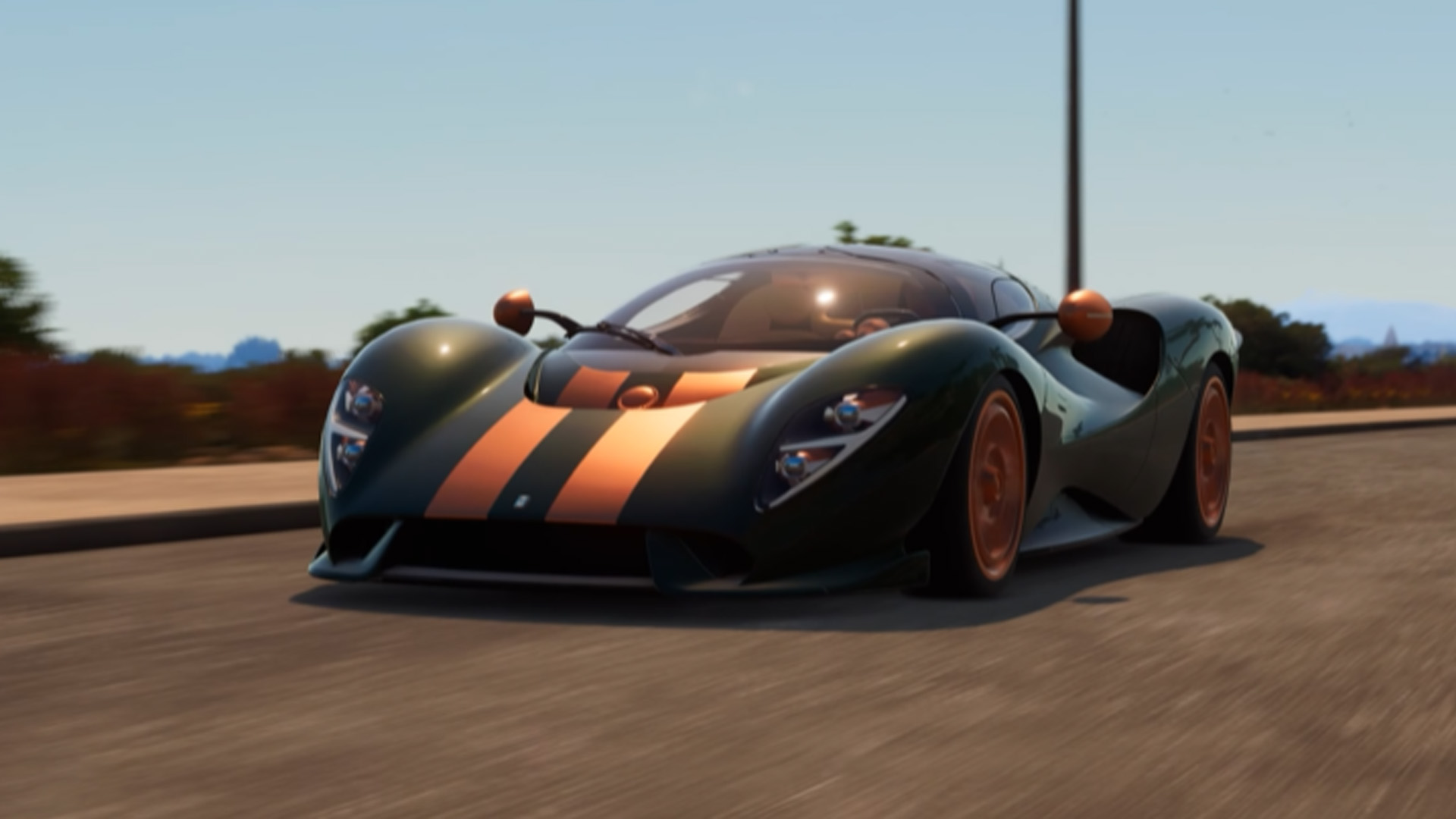

Chat with the Community
Sign Up To CommentIt's completely Free